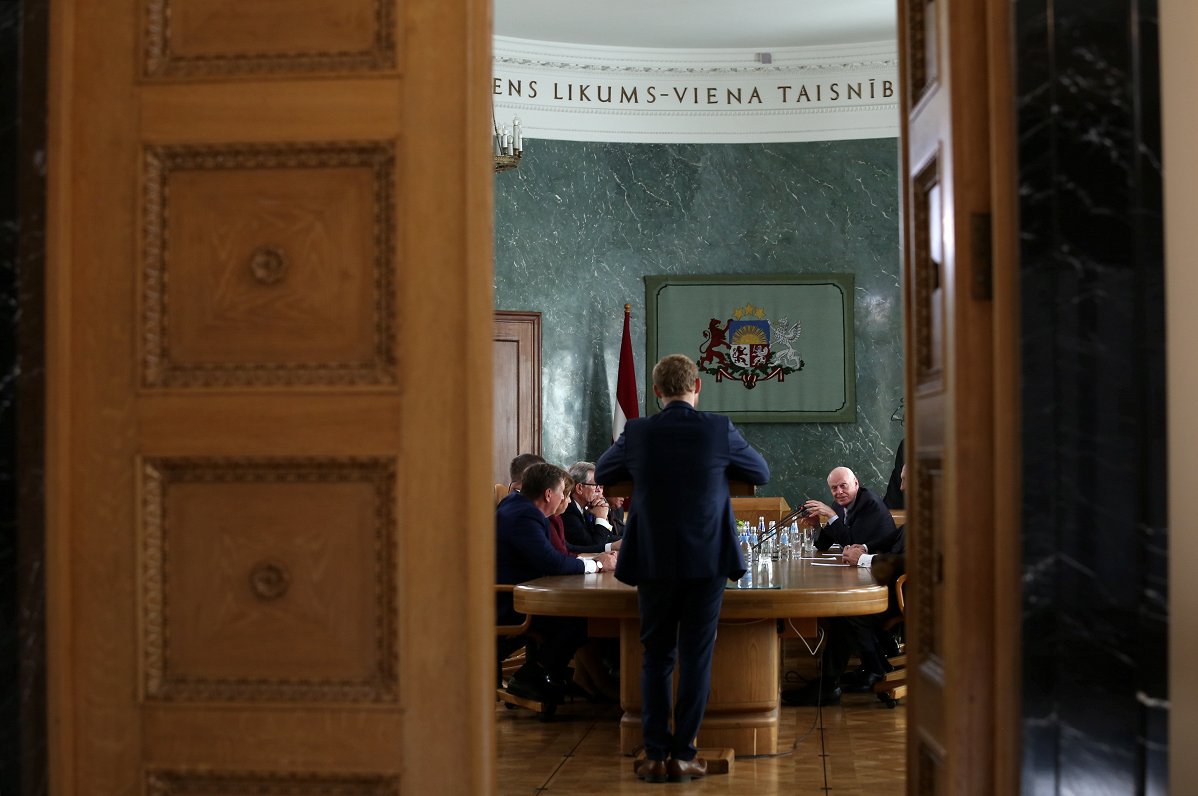Parties form parliamentary coalition
After the election, parties meet for talks to create a coalition. A coalition is usually made up of parties that hold a majority in the 100-seat Latvian parliament. No single party has ever secured a majority on its own; the best result of any party was in 1993 when Latvian Way won 36 seats in the 5th Saeima election, according to Latvia's state bulletin.
While there have been minority governments since Latvia reinstated its independence, they tend to be created by splits after a majority-backed cabinet has been installed. A popular reason for parties to leave the government is disagreement over the state budget.
There are several principles governing which party gets to lead the talks over forming the new coalition. There is no automatic right for the party winning the most seats in the Saeima to be called upon, and that is a reason why many found fault with, for example, a New York Times report about the most recent parliamentary election in Latvia.
To rephrase, winning the most seats, in Latvia's parliamentary democracy, does not mean "winning" the election. Indeed, the president has now nominated Krišjānis Kariņš, representing New Unity - the smallest party in the Saeima with just eight seats - for the Prime Minister's job.
Parties in Latvia have historically formed coalitions based on ethnic lines, excluding parties seen as pro-Russian. In the current case, nevertheless, the Latvian-supported Greens and Farmers Union (ZZS) is likely to be left out in the cold as the New Conservative Party has upheld the promise that it will not join a coalition including ZZS.
President nominates new PM, Saeima votes for cabinet
After the parties come to an agreement, the president formally nominates a prime ministerial candidate. In advance of the elections, the president said he would choose someone who can continue the country's previous course and is able to deal with the needs and challenges the country is facing in the near future.
The parties then come to agreement by drawing up and signing a coalition agreement, government declaration and government action plan, as well as outlining the distribution of ministerial portfolios.
The coalition agreement sets forth the basic principles of cooperation in government and parliament, while the declaration outlines the government's proposed policies and goals it wants to reach in public administration. Meanwhile the action plan outlines the means by which the declaration will be implemented.
The new government is put to vote by the Saeima after the would-be Prime Minister introduces the parliament to the new cabinet and its proposed policies. A majority is required and if the motion passes, the government is up and running.




























